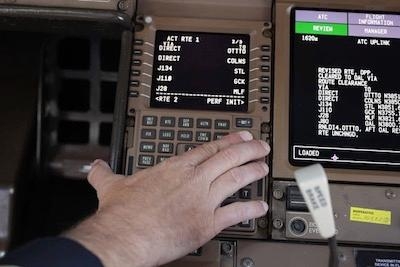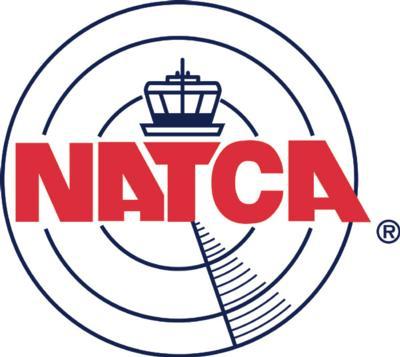NATCA, ALPA Jointly Criticize This Disruption From The Shutdown That Will Cost Taxpayers Millions
The government shutdown is delaying one of the most effective and revolutionary efforts to modernize and enhance the safety and efficiency of the nation’s air traffic control system. The delayed program is called Controller Pilot Data Link Communications (CPDLC), or DataComm. CPDLC is the next generation of communications between pilots and air traffic controllers, enabling quick and accurate delivery of communications between air traffic control and the cockpit by replacing many voice communications with text messages to improve safety and efficiency. It is a key component of the FAA's important modernization program, and it now is on hold due to the unacceptable government shutdown that is negatively affecting aviation more each day.

NATCA members and pilots have already been successfully using DataComm at dozens of airports including Chicago O’Hare and New York-John F. Kennedy. The technology was being rolled out at 10 large, regional en route radar centers before the shutdown began. These air route traffic control centers are responsible for approximately 150,000 square miles of domestic airspace on average. Hundreds of controllers and traffic management coordinators at each of those facilities sequence and separate over-flights over multiple states, and arrivals and departures into multiple airports.
“The training for DataComm has a very specific performance schedule,” said NATCA Director of Safety and Technology Jim Ullmann, a retired air traffic controller who worked for many years at Seattle Air Route Traffic Control Center (ZSE). “Because the timeline is so structured and the training so critical and time consuming, it places additional pressure on employees who are operating with only 83 percent (on average) of the staffing target at their facilities. This shutdown will delay the implementation of DataComm in many centers by up to a year.”
Multi-million-dollar training budgets have already been spent, Ullmann added. However, all of that money may have been wasted, because the training itself may have to be repeated due to the shutdown. Not only is this a significant financial setback for FAA, but it also means more time out of the air traffic operation for controllers, placing a further burden on staffing. We’re already at a 30-year low in the number of fully trained and certified controllers nationwide. Staffing has fallen each of the last six years and this is the second prolonged closure of the FAA Academy to significantly worsen the staffing crisis.

“The nation’s airspace system is a complex transportation network that requires government and industry partnerships to function properly, and the disruptions being caused by the shutdown are threatening the safe and reliable operations of this network,” said Capt. Joe DePete, President of the Air Line Pilots Association, International (ALPA). “In addition to the safety oversight role, the FAA air traffic control organization is in the midst of implementing Data Comm, which has not yet reached its full capability. Due to the shutdown there will be significant delays to this program. If the shutdown continues, air traffic controllers and pilots previously trained on the system will lose their proficiency due to a lack of use, and re-training will likely be required. The need to re-train will add costs and will no doubt delay the progress of this important airspace system upgrade.”
Examples of how the DataComm delay is affecting individual en route centers:
CHICAGO AIR ROUTE TRAFFIC CONTROL CENTER (ZAU): Of 378 air traffic control specialists at Chicago Center only 269 are certified professional controllers (CPCs) are fully certified and capable of working all of their required positions without additional oversight. Chicago Center has invested heavily in training to implement DataComm there, spending 70 percent of the $2.3 million planned for training. However, that will all be wasted if the shutdown continues because the training would have to be repeated. A delay of 10 days to two weeks will cause the facility to push implementation of DataComm from May 2019 to May 2020.
MEMPHIS AIR ROUTE TRAFFIC CONTROL CENTER (ZME): This facility is responsible for 122,000 square miles of airspace over parts of Tennessee, Missouri, Kentucky, Arkansas, Louisiana, Illinois, Indiana, Mississippi, and Alabama. If you have flown cross country, chances are good a controller at this facility has worked part of your flight. But the shutdown means a delay of at least three months for DataComm implementation. This would mean not only a significant financial setback for the FAA but also more time out of the air traffic operation for fully certified controllers, placing a further burden on staffing which is already short at Memphis Center.
NEW YORK AIR ROUTE TRAFFIC CONTROL CENTER (ZNY): This facility is responsible for 3.27 million square miles of airspace in which controllers sequence and separate traffic covering parts of New York, New Jersey, Pennsylvania, Virginia, Bermuda, and the Atlantic Ocean. The facility has been heavily involved in preparing and training for the implementation of DataComm which will have significant safety and efficiency benefits when completed. This shutdown has halted that work. Worse, the timeline for training which was structured to be completed before the start of this year’s severe weather season when all staffing is devoted to the operation, is now in doubt.
(Source: NATCA news release)
 ANN's Daily Aero-Term (04.24.24): Runway Lead-in Light System
ANN's Daily Aero-Term (04.24.24): Runway Lead-in Light System ANN's Daily Aero-Linx (04.24.24)
ANN's Daily Aero-Linx (04.24.24) Aero-FAQ: Dave Juwel's Aviation Marketing Stories -- ITBOA BNITBOB
Aero-FAQ: Dave Juwel's Aviation Marketing Stories -- ITBOA BNITBOB Classic Aero-TV: Best Seat in The House -- 'Inside' The AeroShell Aerobatic Team
Classic Aero-TV: Best Seat in The House -- 'Inside' The AeroShell Aerobatic Team Airborne Affordable Flyers 04.18.24: CarbonCub UL, Fisher, Affordable Flyer Expo
Airborne Affordable Flyers 04.18.24: CarbonCub UL, Fisher, Affordable Flyer Expo




